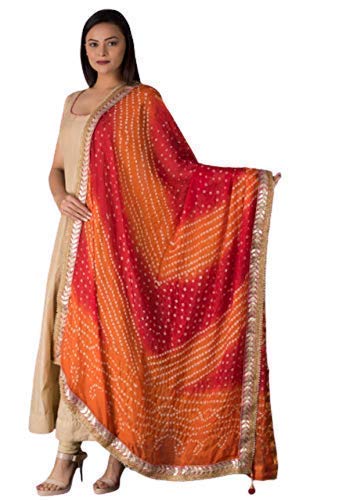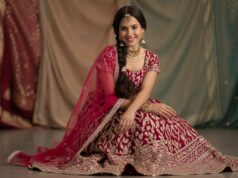The dupatta, a long scarf-like piece of fabric draped across the shoulders or head, has been an integral part of South Asian attire for centuries. Traditionally worn by women as part of the salwar kameez ensemble, this versatile garment carries deep cultural significance that extends far beyond its aesthetic appeal. In today’s rapidly evolving fashion landscape, the dupatta continues to hold its ground, adapting to contemporary sensibilities while maintaining its cultural roots.
A Symbol of Modesty and Respect
Historically, the dupatta served as a symbol of modesty in South Asian cultures. Covering the head and chest, it aligned with religious and cultural values that emphasized dignity and respect, particularly in the presence of elders or in religious settings. In Pakistan, India, Bangladesh, and other parts of South Asia, many women continue to use the dupatta as a form of “purdah” or modest covering.
In modern society, the interpretation of this traditional function has evolved. While some women still wear the dupatta for modesty, others view it as a personal choice rather than a cultural obligation. This shift reflects broader changes in societal attitudes toward women’s clothing and self-expression. What remains consistent is the respect associated with donning a dupatta in certain settings, such as religious ceremonies, family gatherings, or formal events.
Cultural Identity in a Globalized World
In an increasingly homogenized world where Western fashion dominates global trends, the dupatta stands as a powerful symbol of cultural identity. For diaspora communities especially, this flowing fabric serves as a connection to heritage and ancestry. Young South Asian women living abroad often incorporate dupattas into their wardrobes as a way to celebrate their roots while navigating multicultural environments.
Fashion designers have recognized this sentiment, creating contemporary styles that honor traditional elements while appealing to modern sensibilities. The result is a beautiful fusion that allows wearers to express both their cultural identity and their individuality.
Artistic Expression and Craftsmanship
The dupatta embodies centuries of artistic tradition and skilled craftsmanship. Regional variations showcase distinctive techniques that have been passed down through generations:
- Phulkari from Punjab features vibrant embroidery with floral motifs
- Banarasi dupattas from Varanasi boast intricate silk brocade work
- Bandhani from Gujarat and Rajasthan displays complex tie-dye patterns
- Chikankari from Lucknow presents delicate white-on-white embroidery
These artistic traditions not only provide livelihoods to countless artisans but also preserve cultural heritage that might otherwise be lost in our mass-produced world. By choosing handcrafted dupattas, consumers participate in the continuation of these ancient art forms.
Celebration and Ceremony
Perhaps nowhere is the dupatta more significant than in celebration and ceremony. The bridal dupatta, often richly embellished and carefully selected, holds particular importance. The act of covering a bride’s head with this garment symbolizes protection, blessings, and the transition to married life. The color, fabric, and embellishments of the dupatta often carry symbolic meaning specific to different communities and regions.
Beyond weddings, dupattas feature prominently in numerous cultural celebrations. During festivals like Diwali, Eid, or Baisakhi, women often choose dupattas in colors and styles that reflect the spirit of the occasion. These choices connect the wearer to centuries of tradition while participating in contemporary celebrations.
Fashion Evolution and Feminist Reclamation
The modern interpretation of the dupatta represents a fascinating evolution in fashion. Designers now incorporate dupattas into Indo-western fusion wear, experiment with draping styles, and play with unconventional fabrics and prints. This evolution demonstrates how traditional garments can remain relevant by adapting to changing tastes while preserving their essential character.
Interestingly, some feminist movements within South Asia have reclaimed the dupatta as a symbol of choice rather than obligation. By consciously choosing when and how to wear a dupatta, women assert their agency over cultural practices. This reclamation transforms the garment from a potential symbol of restriction to one of empowerment and personal expression.
Environmental and Ethical Considerations
As sustainability becomes a growing concern in fashion, the dupatta’s traditional roots offer valuable lessons. Historically made from natural fibers and designed to last for years, the traditional dupatta stands in contrast to fast fashion’s disposable mentality. Modern consumers increasingly seek out ethically produced dupattas made from sustainable materials, supporting artisans who use environmentally friendly practices.
Conclusion
The dupatta’s enduring presence in modern society speaks to its remarkable adaptability and deep cultural significance. Far from being merely a fashion accessory, it represents a living tradition that continues to evolve while honoring its roots. Whether worn for modesty, celebration, cultural identity, or fashion-forward style, the dupatta remains a powerful symbol of South Asian heritage in our contemporary world.
As we move forward in an increasingly interconnected global society, the dupatta serves as a beautiful reminder that tradition and modernity need not be in opposition. Instead, they can complement each other, creating space for cultural expression that is both authentic and contemporary. In its flowing fabric lies the story of generations past and the promise of cultural continuity for generations to come.












